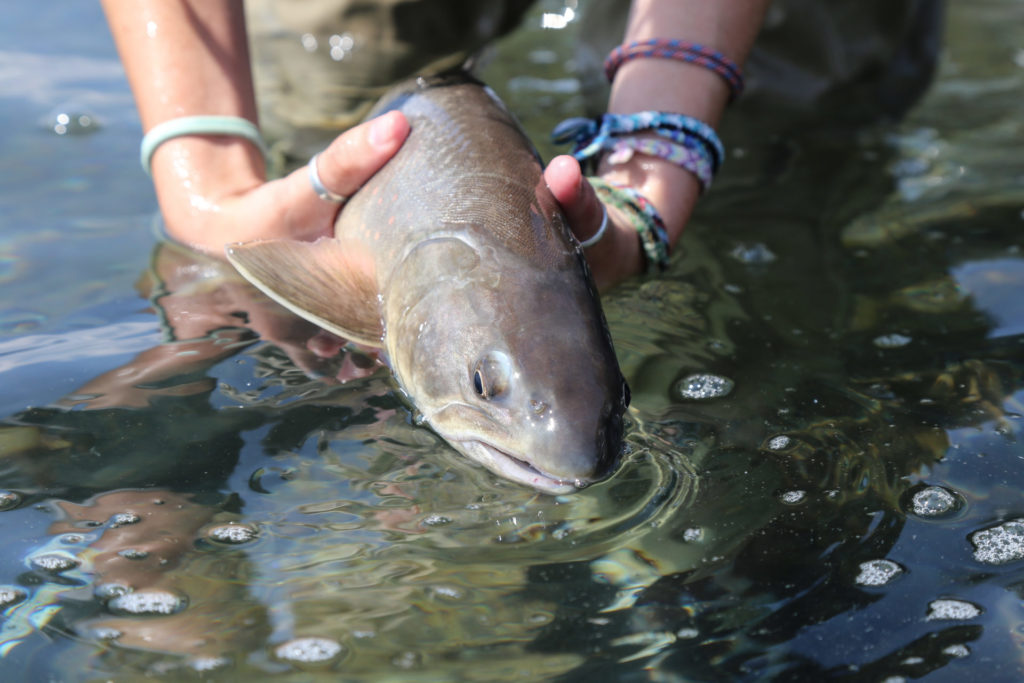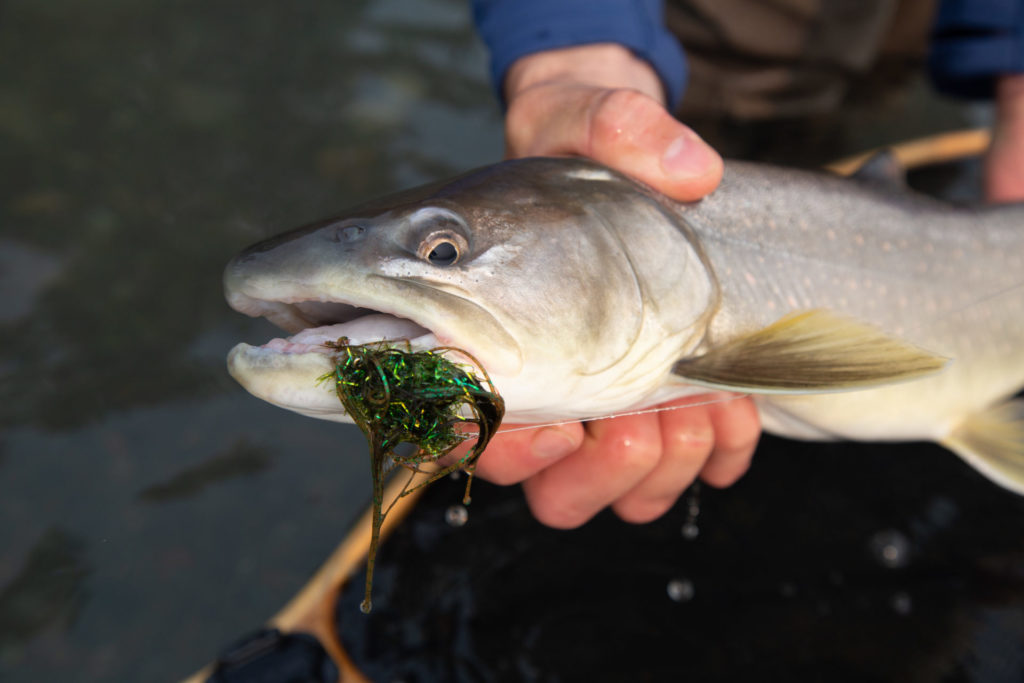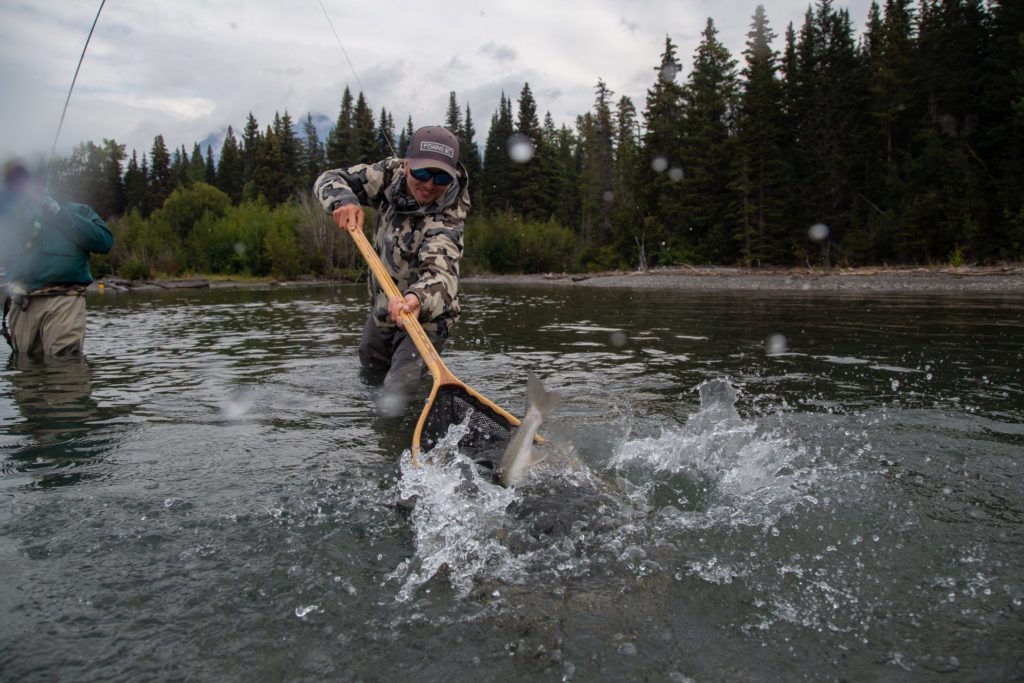Salvelinus confluentus, the predator of most river systems that they inhabit and a true eating machine. As a member of the char family, fly fishing for bull trout has not always been a popular sport. Some circles look down upon them as a salmon fry-destroying, resident rainbow-eating vermin that does not belong in our fisheries. The beautiful thing? They have likely been eating salmon fry and smaller resident rainbow trout for more years than we could even fathom.
Advertisement

So, what’s the allure in pursuing them with a fly rod? Bull trout have a unique behaviour, more resembling species like barracuda, GTs, pike and golden dorado. The great thing about bull trout is that they just do not care. They do not care how big the fly is, how fast the rainbow that you just hooked on a #18 parachute Adams is swimming through the pool trying to free itself from the hook, they just love to kill.
To put it plain and simple, bull trout are not a hard fish to catch. I once stood on the opposite side of a creek from a guest who was sight casting at a bull trout, I watched the fish chase on seven consecutive casts before she managed to hook up. Bull trout are incredibly aggressive, but there are always ways you can make yourself more effective in both hooking and landing them.
Advertisement

- Present the fly broadside first. Aside from a small handful of scenarios, I believe a single-handed rod is the best tool for chasing these fish. Single-handed rods cater very well to stripping streamers and showing the fish the whole profile of the fly from a broadside view, before rapidly pulling it out of their window, results in a lot of eats. This elicits the same chase response that many predators in nature rely on to make a kill.
- Strip, and strip fast. Often times, you cannot move a fly too fast to trigger a fish to chase. Often what is more important than the fly you are fishing is how you are fishing it. In most scenarios, a fly that is steadily moving at a rapid pace will get fish moving more often than a fly that is leisurely crawling its way through a pool. A great way to keep your fly moving at a pace that gets bull trout to eat is to tuck the rod under your arm and use two hands to retrieve the fly.
- Keep it moving. Even if a fish sees your fly from 30 feet away, sometimes they will not commit to eating it until the fly is almost at the boat or the bank. Keep them interested; do not drop the fly for long periods of times, as this is where most fish will turn away and lose interest. “Strip to the tip” is a great way to make sure that you are fishing your fly to its maximum potential, and do not be surprised how often you will not get a grab until the fish is 10 feet off the end of your rod.
- Strip set. This cannot be stressed enough. Strip setting is the act of driving the hook home by using your fly line and stripping hand instead of lifting the rod tip with your casting hand. Bull trout have fairly solid, bony mouths that can be hard to penetrate with a weak hook set. Strip setting allows the fish to get the iron as the hook is being driven into the mouth with far more force than the traditional trout set. It also does not pull the fly out of the fish’s window if it grabs it once and doesn’t get the hook. Lastly, bull trout do not turn their head after eating the fly in the same fashion that rainbows often will, so the grab can often feel more like hooking bottom than anything. Pay attention to any hesitation you can feel through the fly line, and whenever there is a stop or heaviness you should be expecting that it is indeed a fish.
- Find structure. Bull trout love to ambush from an unsuspecting position. Look for overhanging branches, log jams, undercut banks and pools that have a good number of large boulders. Often times, the closer your fly can be to this structure, the higher your chances of getting right in their wheelhouse will be.
- Big fly, small fly. When it comes to fly size, often the fly would become too large and cumbersome to cast before it would be too large for a bull trout to eat. I have seen 20-inch rainbows on the end of the line with a bull trout not much bigger in hot pursuit. Contrary to this, when you are fishing over fish that are highly pressured, are keying in on small food such as salmon fry, or a fish that you have already gotten to chase a few times without closing the deal, a small fly can be the ticket. Start with a big fly first. If you have a hunch that you have passed over a fish but did not convert, go back through with a small, rolled muddler minnow or fry imitation.
Bull trout are an excellent species to target with flies. They are aggressive, beautiful to look at and have a very unique set of behaviours. Next time you are looking for some change in your weekend fishing ventures, do not be afraid to grab your streamer rod and a box of flies the size of small birds and chase these apex predators.
